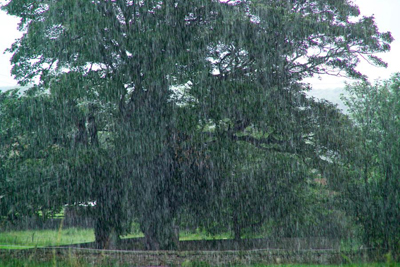
Most states offer early archery seasons and in recent years these seasons have featured unseasonably warm weather. Temperatures in the 40s and highs in the 60s might make for comfortable tree-stand vigils, such temperatures literally shutdown daytime deer activity. In fact, the weather’s influence on deer activity has been scientifically documented as a major suppressor/stimulator of daytime deer activity.
By Daniel E. Schmidt DDH Editor-in-Chief
Over the past 20 years no one has studied this phenomenon more closely than Deer & Deer Hunting Northern Field Editor Charles Alsheimer. He has written dozens of articles on the topic and even included lengthy explains of how weather affects deer in his annual lunar rut predictions for D&DH’s Whitetail Calendar and Lunar Rut Guide.
According to Alsheimer, whitetails have a built-in mechanism that can detect impending weather changes. This mechanism allows them to detect falling barometric pressure, and, as a result, dramatically increase their feeding activity before bad weather arrives. Some research biologists might cringe when they hear such anecdotal “absolutes,” but this point has actually been proven through scientific studies. For example, Illinois biologist Keith Thomas conducted a comprehensive study that concluded most whitetail feeding occurred when the barometric pressure hovered between 29.80 and 30.29 inches, regardless of whether the barometric pressure was rising or falling.
Alsheimer’s 40-plus years of studying deer behavior reveal matching observations.
“With few exceptions, deer move little during low-pressure fronts, which often result in fog, rain or snow,” Alsheimer said. “Then, as fronts pass and the barometer rises, deer activity increases dramatically – if air temperatures match the whitetail’s comfort zone.”
Air temperature’s affect on deer activity goes straight to the phenomenon Alsheimer dubbed as “The Fur Factor.” It basically states that deer living north of the 40th parallel shut down when temperatures exceed 45 degrees.
“With their heavy fur coats and inability to ventilate as humans do,” he said, “white-tailed deer simply cannot function in warm weather.”
Of course, temperature is relative to region. Whereas Northern deer might be uncomfortable in 50-degree weather, the opposite holds true for whitetails living in, say, some areas of Alabama, South Carolina and Florida’s panhandle. It’s all relative, but deer in warmer climates will obviously move more in 50-degree weather if they spend most of the year in scorcher-type environments.
+++++
Maximize Your Deer Season Planning
From Deer & Deer Hunting Magazine, the 2016 Whitetails Wall Calendar features the work of deer researchers Wayne Laroche and Charlie Alsheimer, who reveal the 2016 whitetail rut prediction, based on years of lunar cycle research. Utilize this deer moon phase calendar to find out which days the deer will be seeking and chasing so you can time the rut for the best time to hunt.
Get your calendars today for home, work and deer camp!









